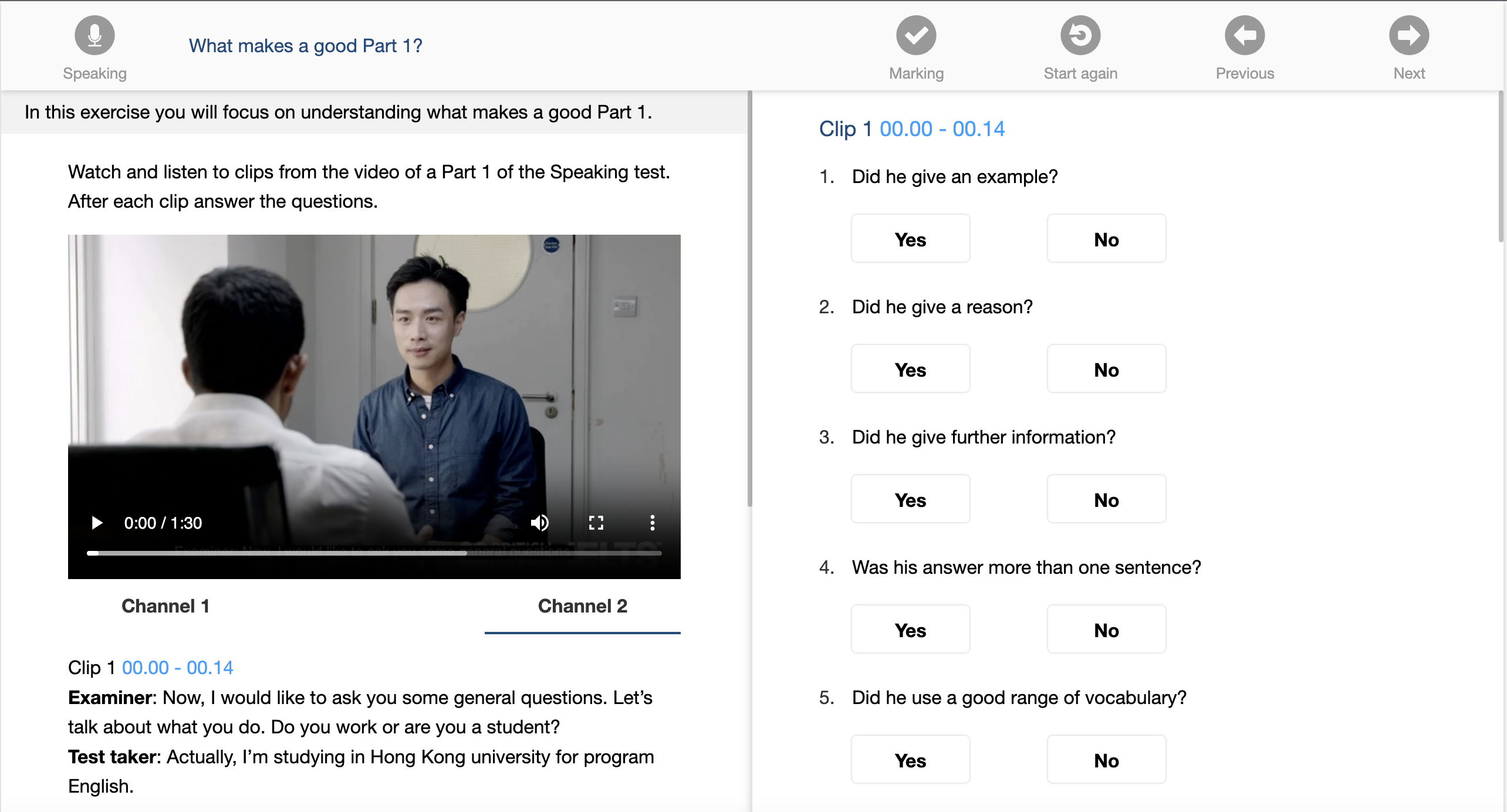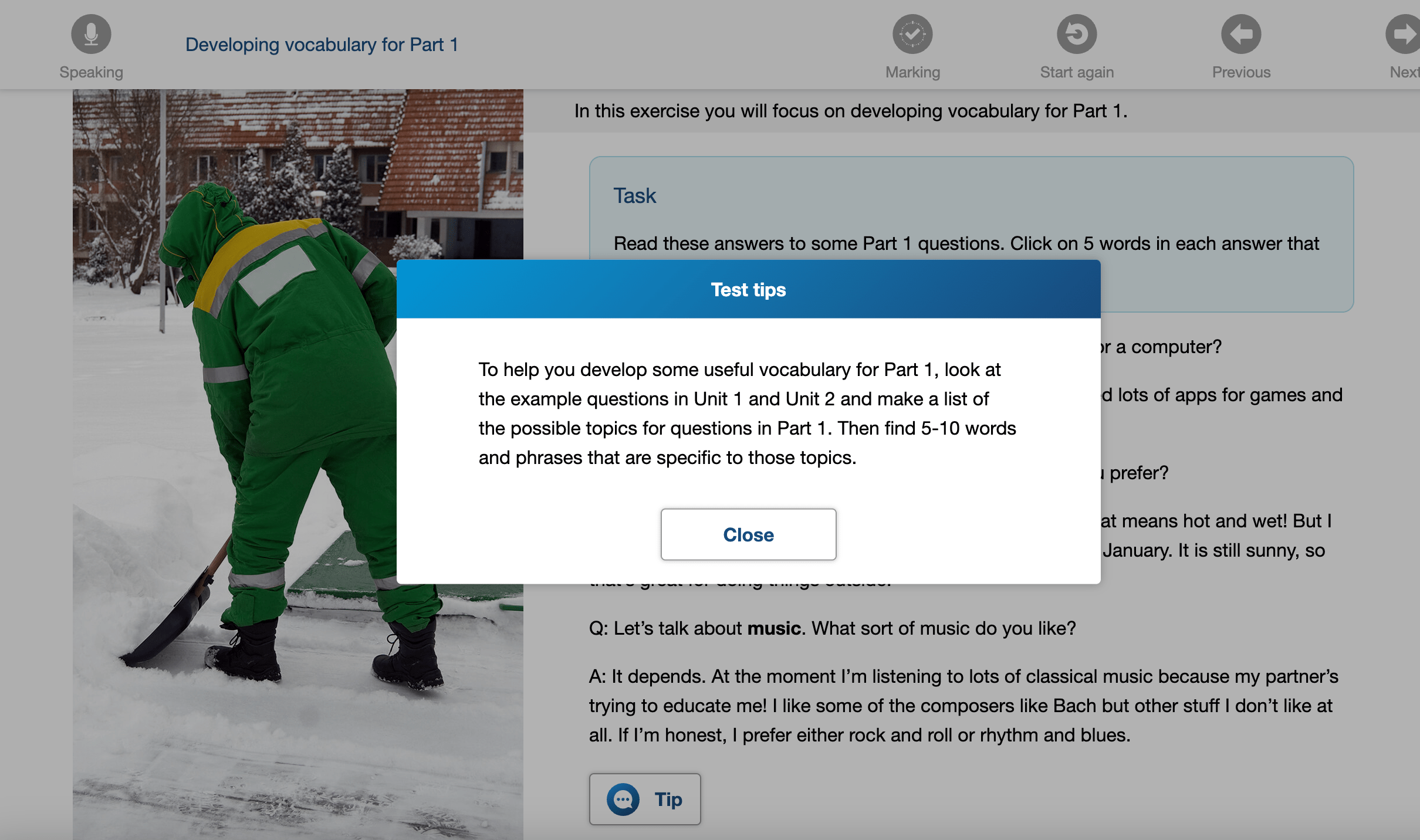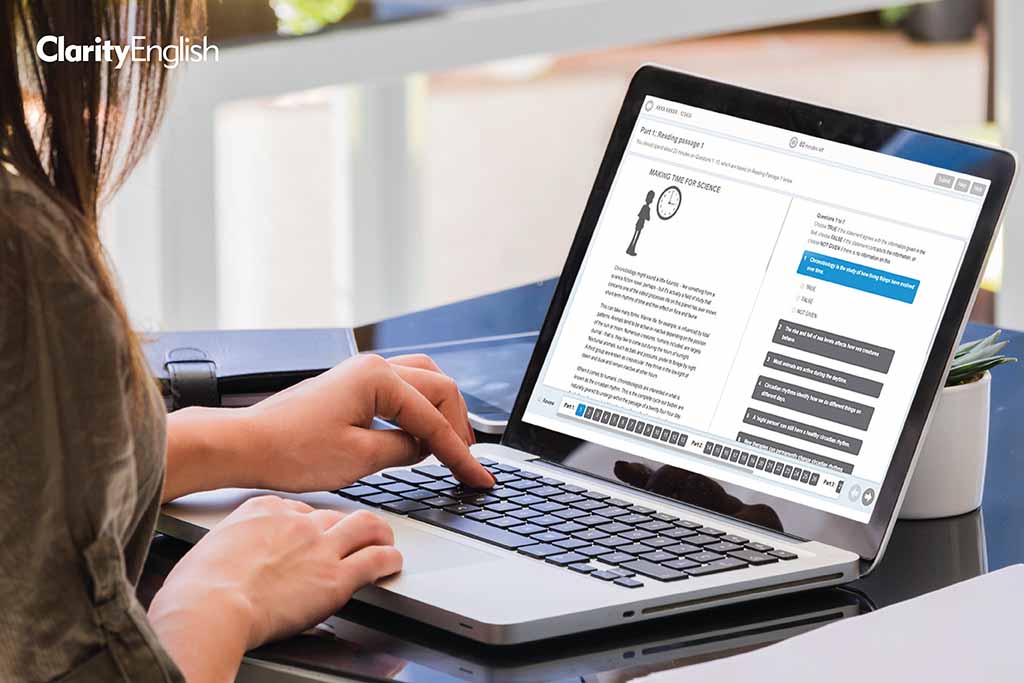Last week saw the launch of a comprehensive upgrade to the Road to IELTS Speaking Practice Zone. We have completely re-written the section and put the candidates right at the centre of all the activities. It is now highly interactive and gives users the chance to improve their Band Score in six key ways.
1. Being informed
In this version of the Speaking section, we want to make users feel completely confident about what the test is, what they have to do and what the examiner is looking for.
2. In-depth analysis
We use videos of interviews to allow users to analyse exactly what makes a better response in each part of the test: the Part 1 interview, the Part 2 ‘Long Turn’ or talk, and the Part 3 discussion. Users can watch tests at different levels, evaluate them, and pick out the strong features. They will then have the opportunity to practise recording their own voice and using prompts to assess their performance.

3. Vocabulary development
Candidates can systematically develop the areas of vocabulary that they will find useful in each part of the test. These exercises will help to improve vocabulary not just at word level, but will also help when using collocations (word partners), idiomatic phrases, and lexical groups, which make speech sound more natural.

4. Learning grammatical structures
Developing a range of grammatical structures is necessary to achieve a higher Band Score for Grammatical Range and Accuracy. Candidates will be able to practise including more complex structures in their speaking, appropriate for each part of the test. At the same time, they will have plenty of practice in improving their accuracy – using the right tenses, the correct prepositions, linking words and time expressions.
5. Useful strategies
Learning useful strategies for each part of the test is just as important as learning content. For example: how to expand responses in Part 1 by giving reasons and examples; how to improve a talk in Part 2 by using story-telling and descriptive devices; knowing how to buy some thinking time in the Part 3 discussion.
6. Speaking practice
In every set, users will have a number of opportunities to record themselves and then analyse their responses through a set of guiding questions. We have also included, for the first time, some help on pronunciation with exercises that are both helpful and fun.
Overall, we hope that this new version will help your candidates become more active learners, have a lot of fun while learning, and, of course, improve their IELTS Speaking Band Score.
You can see the upgrades from a unit in the Road to IELTS Free Version here.

